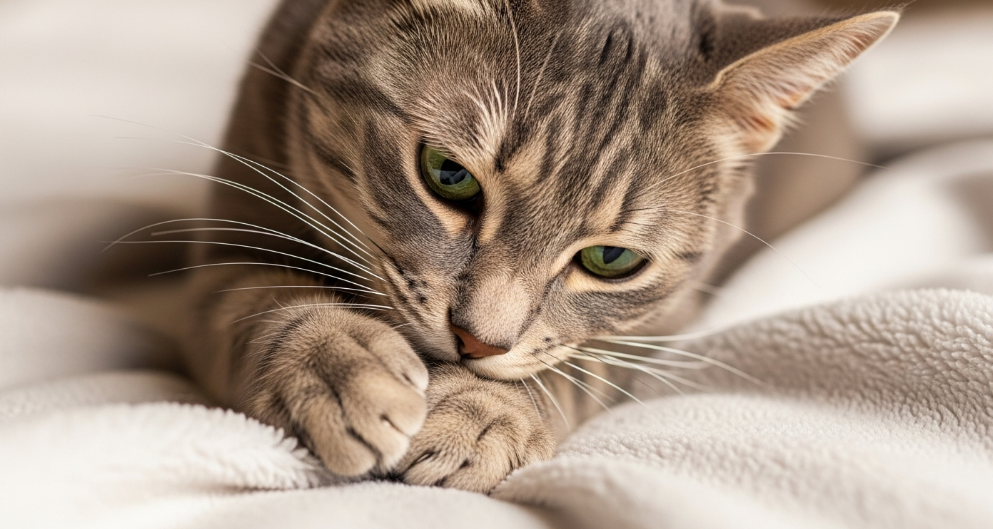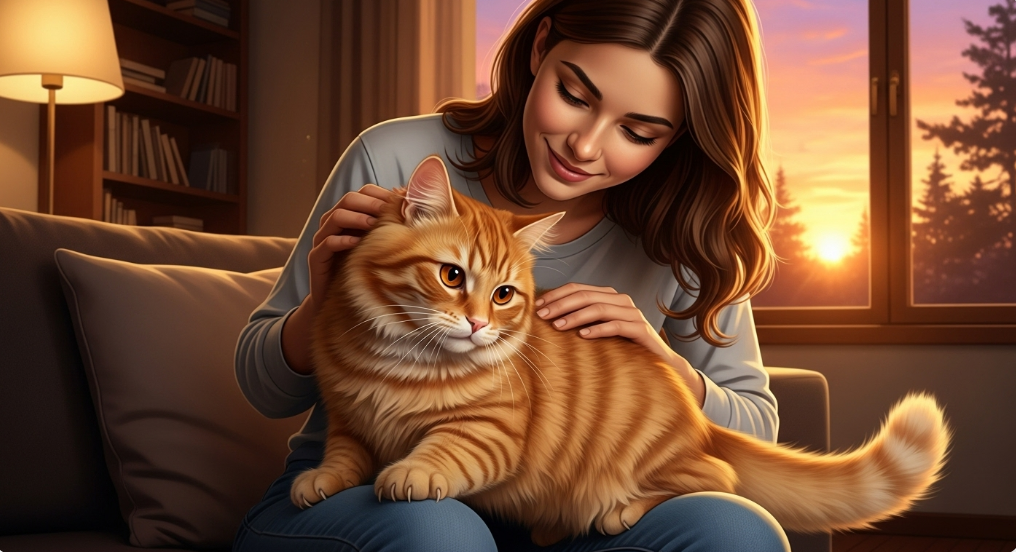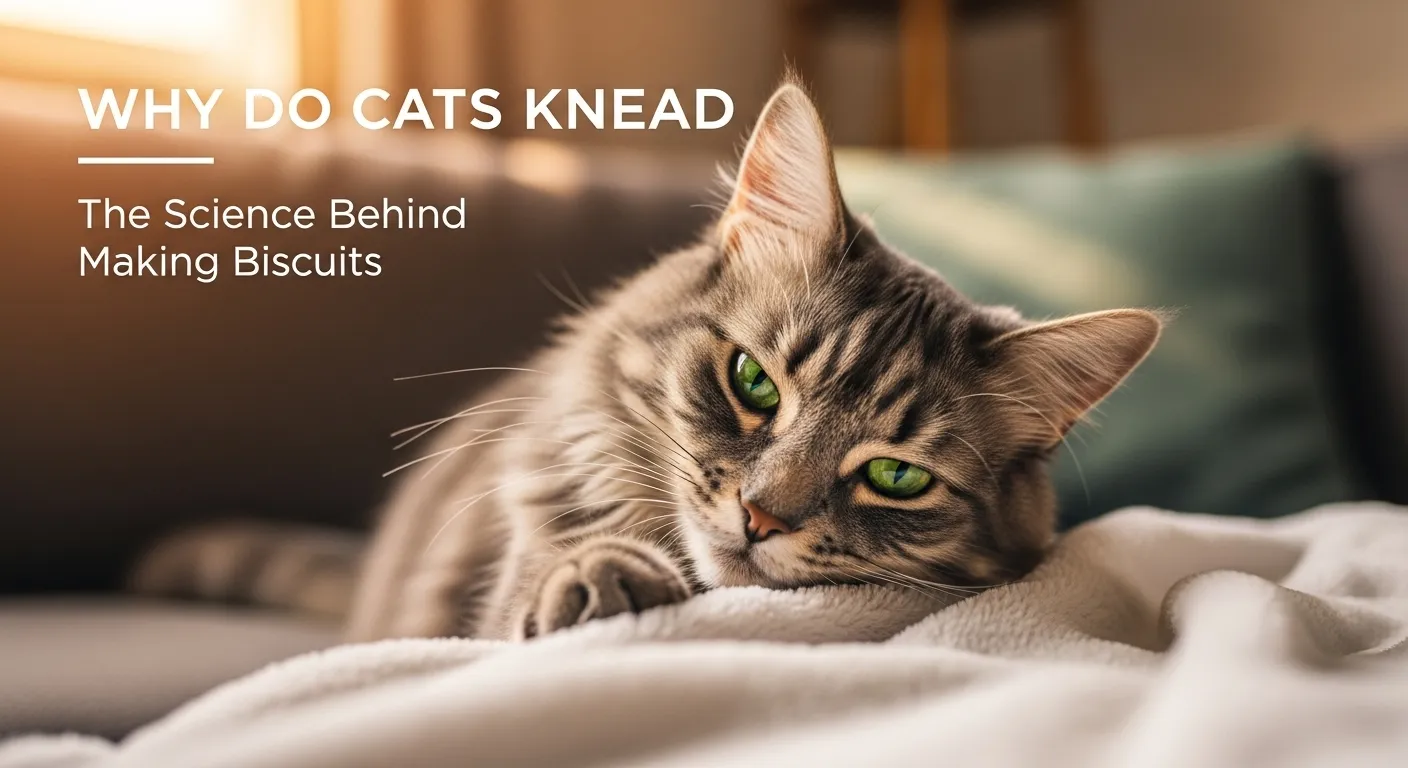Cats have many charming habits, and one of the most beloved is when they “make biscuits.” This behavior, called kneading, involves a cat rhythmically pushing their paws in and out on soft surfaces like blankets, pillows, or your lap. It’s adorable but often leaves cat owners curious: why do cats do this? This guide explains the reasons behind kneading, what it reveals about your cat’s feelings, and how to handle it. We’ll answer common questions and provide practical tips for cat parents.
What Is Kneading?
Kneading is when a cat presses their front paws, sometimes all four, into a soft surface in a rhythmic, alternating motion. It looks like they’re kneading dough, which is why it’s nicknamed “making biscuits.” Cats often purr, drool, or close their eyes while kneading, showing they’re relaxed. This behavior is common in kittens and adult cats, though not every cat does it.

Why Do Cats Knead?
Veterinarians and animal behaviorists point to several reasons for kneading, often tied to instinct and emotion. Here are the main explanations:
1. Kittenhood and Nursing
Kneading starts in kittenhood. Kittens knead their mother’s belly to stimulate milk flow while nursing. This action links kneading to comfort, safety, and food. Many adult cats keep this habit because it reminds them of those early, secure moments. This is why some cats drool while kneading.
2. Comfort and Relaxation
Kneading often means a cat is happy and relaxed. It’s like a soothing ritual, similar to how humans might fidget when content. Cats knead soft surfaces to create a cozy environment. Kneading may release calming hormones, reinforcing the behavior.
3. Marking Territory
Cats have scent glands in their paw pads. Kneading leaves their scent, marking the surface as theirs. This can apply to blankets, furniture, or even you. It’s a way to claim their space and feel secure.
4. Affection and Bonding
When your cat kneads your lap, it’s likely showing trust and affection. They see you as a comforting presence, like their mother. Kneading on owners strengthens the bond.
5. Instinctual Behavior
In the wild, cats knead grass or leaves to make a soft spot for resting or giving birth. Domestic cats may retain this instinct, kneading blankets or beds to make them cozier.

Is Kneading Always a Good Sign?
Kneading is usually a sign of happiness or comfort. However, there are exceptions:
- Stress or Anxiety: Excessive kneading, especially in odd situations, might indicate stress. Stressed cats may knead to self-soothe.
- Pain or Health Issues: Rarely, kneading with symptoms like limping or vocalizing could signal pain. If you notice this, contact your veterinarian.
If kneading seems unusual, watch your cat’s overall behavior and consult a vet if needed.
How to Handle Kneading
Kneading is sweet, but claws can make it painful. Here are tips to manage it:
- Trim Nails Regularly: Keep nails short to avoid scratches. Learn safe trimming from your vet or ASPCA.
- Use a Barrier: Place a thick blanket or towel on your lap.
- Redirect to Alternatives: Encourage kneading on a soft pet bed or blanket. Reward with treats to reinforce this.
- Stay Calm: Don’t startle your cat while they knead, as it could make them hesitant to show affection.
Common Questions About Kneading
Here are answers to questions cat owners often ask:
- Why does my cat knead me but not others?
Cats knead people they trust most, showing they feel safe with you. - Is it normal for cats to knead with claws out?
Yes, claws often come out during kneading. Trim nails or use a blanket. - How can I stop my cat from kneading if it hurts?
Redirect them to a soft surface or trim their nails. Never punish them. - Do all cats knead?
No, some cats don’t knead, and that’s normal. Each cat is unique. - Why does my cat drool when kneading?
Drooling shows extreme relaxation, often tied to nursing memories.
Common Kneading Behaviors and Meanings
| Behavior | Likely Meaning | What to Do |
|---|---|---|
| Kneading with purring | Happiness, relaxation | Enjoy the moment, pet gently |
| Kneading with claws out | Normal instinct, marking territory | Trim nails, use a blanket |
| Excessive kneading | Possible stress or anxiety | Monitor behavior, consult vet if needed |
| Kneading with drooling | Extreme comfort, nursing memory | Normal, no action needed |
| Kneading only on you | Affection, trust, bonding | Strengthen bond with gentle interaction |
Conclusion
Kneading, or “making biscuits,” is a natural behavior rooted in kitten instincts. It shows comfort, affection, or territory marking. While usually positive, excessive kneading may need a vet’s attention. Understanding why your cat kneads helps you appreciate their love and manage the behavior. Use these tips to keep kneading comfortable and strengthen your bond with your cat.
